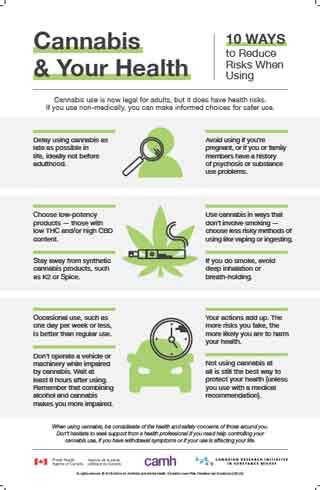As the haze of societal perceptions around cannabis continues to shift, so too does the conversation surrounding its use. Once relegated to the shadows of stigma, marijuana has emerged into the spotlight—celebrated for its therapeutic potential and recreational allure. Yet, beneath the allure of swirling smoke and euphoric experiences lies a hidden landscape of risks that is often overlooked. In this article, we embark on a journey through the intricacies of cannabis use, shedding light on both the promising benefits and the potential pitfalls. By shining a spotlight on the risks of smoking weed, we aim to foster a balanced understanding that empowers informed choices in a world where cannabis is increasingly woven into the fabric of everyday life.
Table of Contents
- Understanding the Health Implications of Cannabis Use
- Exploring the Mental Health Consequences of Marijuana Consumption
- Assessing the Impact of Cannabis on Daily Life and Functioning
- Navigating Responsible Use: Strategies for Mitigating Risks
- Q&A
- Closing Remarks
Understanding the Health Implications of Cannabis Use
Cannabis consumption, particularly through smoking, has been linked to a variety of health effects that can range from mild to severe. While many individuals use cannabis for its perceived benefits, it’s essential to recognize the potential risks associated with inhaling smoke. Smoking can lead to respiratory issues, including chronic bronchitis and reduced lung function. Concerns also extend to the cardiovascular system, as smoking cannabis can cause an increase in heart rate and affect blood pressure, putting those with preexisting conditions at greater risk.
Moreover, the psychoactive component of cannabis, THC, can impair cognitive functions and motor skills, which poses significant safety risks, especially while driving or operating machinery. Long-term use may lead to mental health concerns, including increased anxiety and the potential for dependence. It’s crucial to consider individual factors such as genetics, existing health conditions, and frequency of use when evaluating the potential risks of cannabis smoking.
| Health Risks | Description |
|---|---|
| Respiratory Issues | Increased risk of chronic bronchitis and lung infections. |
| Cognitive Impairment | Possible long-term memory issues and attention deficits. |
| Mental Health Concerns | Potential for anxiety, depression, and dependency. |
| Cardiovascular Effects | Increased heart rate and risks associated with blood pressure fluctuations. |
Exploring the Mental Health Consequences of Marijuana Consumption
While marijuana is often perceived as a harmless recreational substance, its consumption can carry significant mental health risks, especially among adolescents and young adults. Studies have shown a correlation between frequent marijuana use and an increase in symptoms of anxiety and depression. For some individuals, THC, the psychoactive component in cannabis, may exacerbate existing mental health disorders or trigger their onset. A few notable consequences include:
- Increased Anxiety: Some users report heightened feelings of paranoia and anxiety when under the influence of marijuana.
- Depression: Chronic use can contribute to depressive symptoms, making recovery from mental health issues more challenging.
- Cognitive Impairment: Regular marijuana use can impair memory and cognitive function, impacting decision-making and emotional regulation.
Furthermore, the use of marijuana as a coping mechanism can lead individuals to avoid addressing underlying mental health issues. This can create a cycle where temporary relief is prioritized over long-term well-being. For those who are susceptible, the mental wellness implications can be severe. As illustrated in the following table, understanding these risks is essential for making informed choices regarding marijuana use:
| Mental Health Issue | Potential Impact |
|---|---|
| Generalized Anxiety Disorder | Exacerbation of symptoms |
| Depression | Increased risk of episodes |
| Psychosis | Potential onset in predisposed individuals |
| Cognitive Decline | Impaired memory and learning |
Assessing the Impact of Cannabis on Daily Life and Functioning
The effects of cannabis can vary significantly from person to person, influencing various aspects of daily functioning. Regular users may find that their motivation levels shift, which can lead to challenges in maintaining productivity at work or managing household responsibilities. Tasks that once seemed manageable may feel daunting, and this alteration in motivation can extend to social interactions as well. As such, individuals might experience a shift in their relationships, feeling less inclined to engage with friends or family, contributing to potential feelings of isolation. The intricate balance between relaxation and alertness becomes pivotal, as many wrestle with the desire to unwind versus the necessity of staying active and engaged in life.
Furthermore, cognitive functions can be affected, leading to difficulties in concentration and memory retention. Users may confront challenges such as:
- Short-term memory loss: Recalling recent conversations or information can become problematic.
- Impaired decision-making: Judgments may be clouded, affecting choices in everyday scenarios.
- Decreased attention span: Maintaining focus on tasks can prove increasingly difficult.
Understanding these risks is essential for anyone considering the impact of cannabis on their daily lives. A balance between enjoyment and responsibility is crucial to ensure that personal and professional obligations are met.
Navigating Responsible Use: Strategies for Mitigating Risks
As the use of cannabis becomes more prevalent, understanding the associated risks is crucial for making informed decisions. One effective way to navigate these challenges is through education. Engaging with accurate information about the effects of cannabis can enhance awareness and promote responsible usage. Consider exploring the following resources:
- Government Health Websites: Access factual data on health impacts and legal considerations.
- Medical Journals: Review studies detailing the long-term effects of cannabis use on mental and physical health.
- Support Groups: Connect with others who share experiences and insights regarding responsible cannabis consumption.
In addition to education, establishing personal boundaries around cannabis usage can significantly mitigate potential risks. Implementing strategies such as:
- Usage Journals: Track your usage to identify patterns and effects on daily life.
- Time Limits: Designate specific days or times for usage to prevent habitual reliance.
- Mindfulness Practices: Engage in mindfulness to become more aware of how cannabis affects you emotionally and psychologically.
| Risk | Mitigation Strategy |
|---|---|
| Dependency | Limit frequency of use |
| Impaired Judgment | Avoid using before important tasks |
| Legal Issues | Stay informed about local laws |
Q&A
Q&A: Understanding the Risks of Smoking Weed
Q1: What are the short-term effects of smoking weed?
A1: When you smoke weed, you may experience a range of immediate effects, including heightened sensory perception, altered mood, and impaired motor skills. Some users report feelings of euphoria, while others may experience anxiety or paranoia. These effects usually peak within the first hour and can last for several hours, depending on the potency of the strain and individual tolerance.
Q2: Can smoking weed have long-term health consequences?
A2: Yes, while some individuals use weed recreationally without apparent long-term consequences, habitual use can potentially lead to health issues. Regular smoking can harm lung health, similar to tobacco. Additionally, studies suggest a link between long-term use and cognitive impairment, particularly in younger users whose brains are still developing.
Q3: Is there a risk of developing a dependence on marijuana?
A3: Indeed, while not everyone who smokes weed will develop a dependence, research indicates that approximately 9% to 10% of users may experience marijuana use disorder. This risk increases for those who start using marijuana at a younger age or use it daily. Dependence can manifest through cravings and withdrawal symptoms when not using.
Q4: How does smoking weed affect mental health?
A4: The relationship between weed and mental health is complex. For some individuals, marijuana can alleviate symptoms of anxiety and depression; however, for others, it may exacerbate these conditions or trigger episodes of paranoia and psychosis, particularly in those with a predisposition to mental health issues. The context of use, frequency, and individual vulnerabilities play significant roles in determining the outcome.
Q5: Are there specific populations that face higher risks when smoking weed?
A5: Yes, certain populations may face increased risks associated with smoking weed. Adolescents and young adults, whose brains are still developing, may be more susceptible to cognitive effects and mental health disorders. People with a family history of mental illness or those already suffering from psychological disorders should approach cannabis use with caution.
Q6: Can smoking weed impact motivation and productivity?
A6: Some users report a phenomenon known as “amotivational syndrome,” characterized by decreased motivation and productivity over time. While research is still ongoing, chronic users may experience difficulties in goal-setting and task completion, possibly due to the drug’s effects on focus and drive.
Q7: How can one reduce the risks associated with smoking weed?
A7: To mitigate risks, individuals can consider several strategies: limit use, avoid smoking at a young age, choose lower THC strains, and be aware of one’s mental health history. Additionally, opting for methods of consumption other than smoking, such as edibles or tinctures, may also reduce respiratory-related risks.
Q8: What should one do if they feel they’ve developed a dependence on marijuana?
A8: If you suspect you’ve developed a dependence on marijuana, it’s essential to seek professional help. Various resources, including counseling and support groups, can provide guidance and assistance in addressing substance use and exploring healthier coping mechanisms.
Q9: Is there a place for marijuana use in modern society despite these risks?
A9: Many people find marijuana beneficial for medical, recreational, or social purposes, suggesting a nuanced stance on its use. However, awareness of the associated risks is vital. Responsible usage, informed choices, and legal considerations are essential for individuals navigating the evolving landscape of marijuana in society.
Closing Remarks
As we draw the curtain on our exploration of the multifaceted risks associated with smoking weed, it’s essential to recognize that this journey into the realm of cannabis is not simply a matter of legality or popularity. Rather, it is a complex tapestry woven from personal choices, societal influences, and underlying health implications. While many celebrate the plant for its potential benefits and cultural significance, it’s crucial to remain informed about the potential downsides.
Whether you are an advocate or a skeptic, understanding the risks helps pave a path towards responsible decision-making. As the conversation around cannabis continues to evolve, let us approach it with a balanced mindset—acknowledging both its allure and its pitfalls. knowledge is not just power; it is the key to navigating the intricate landscape of cannabis use with awareness and caution. So, as you consider your own relationship with weed, remember that informed choices can help shape a healthier tomorrow for both individuals and communities alike.


